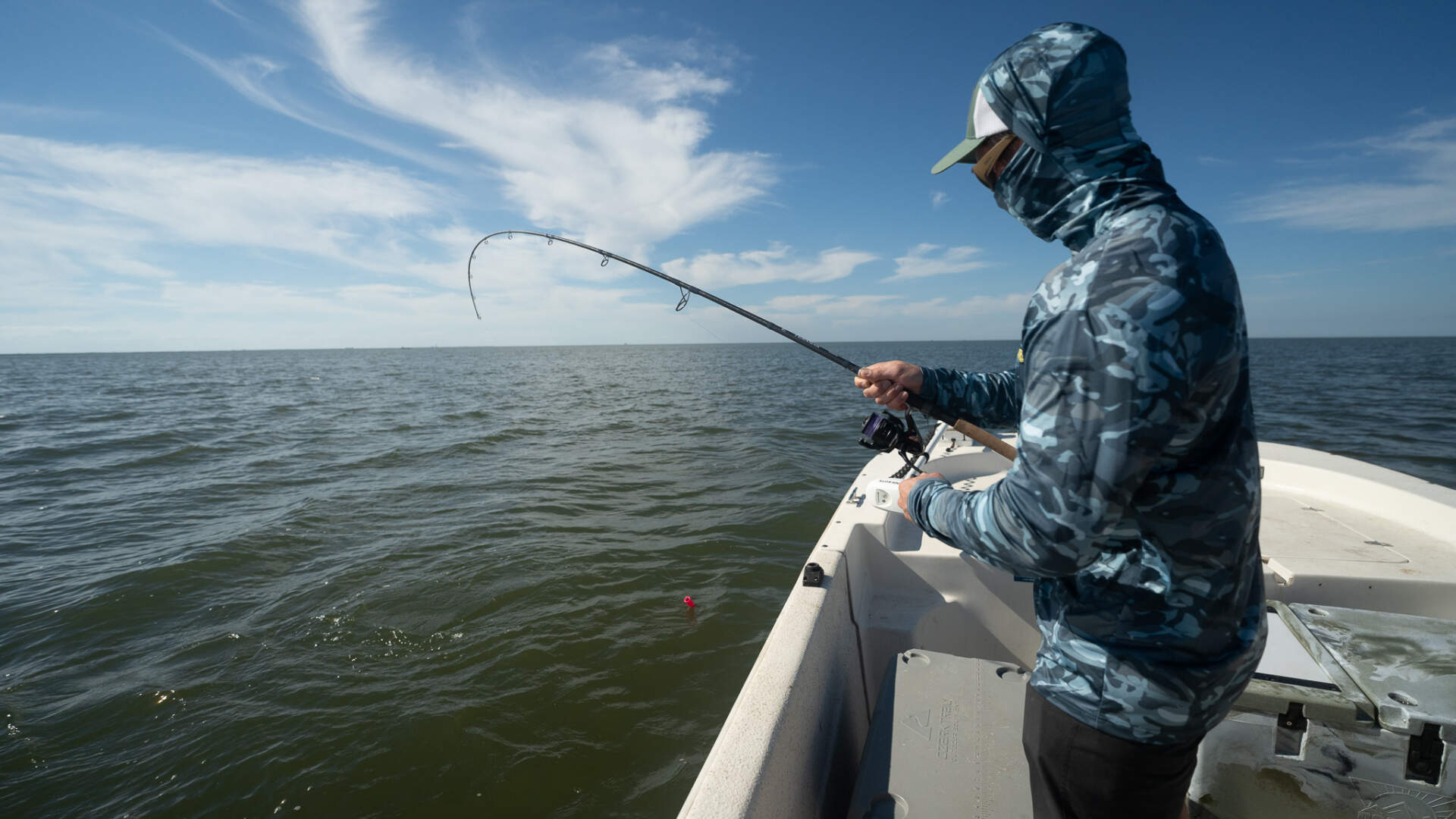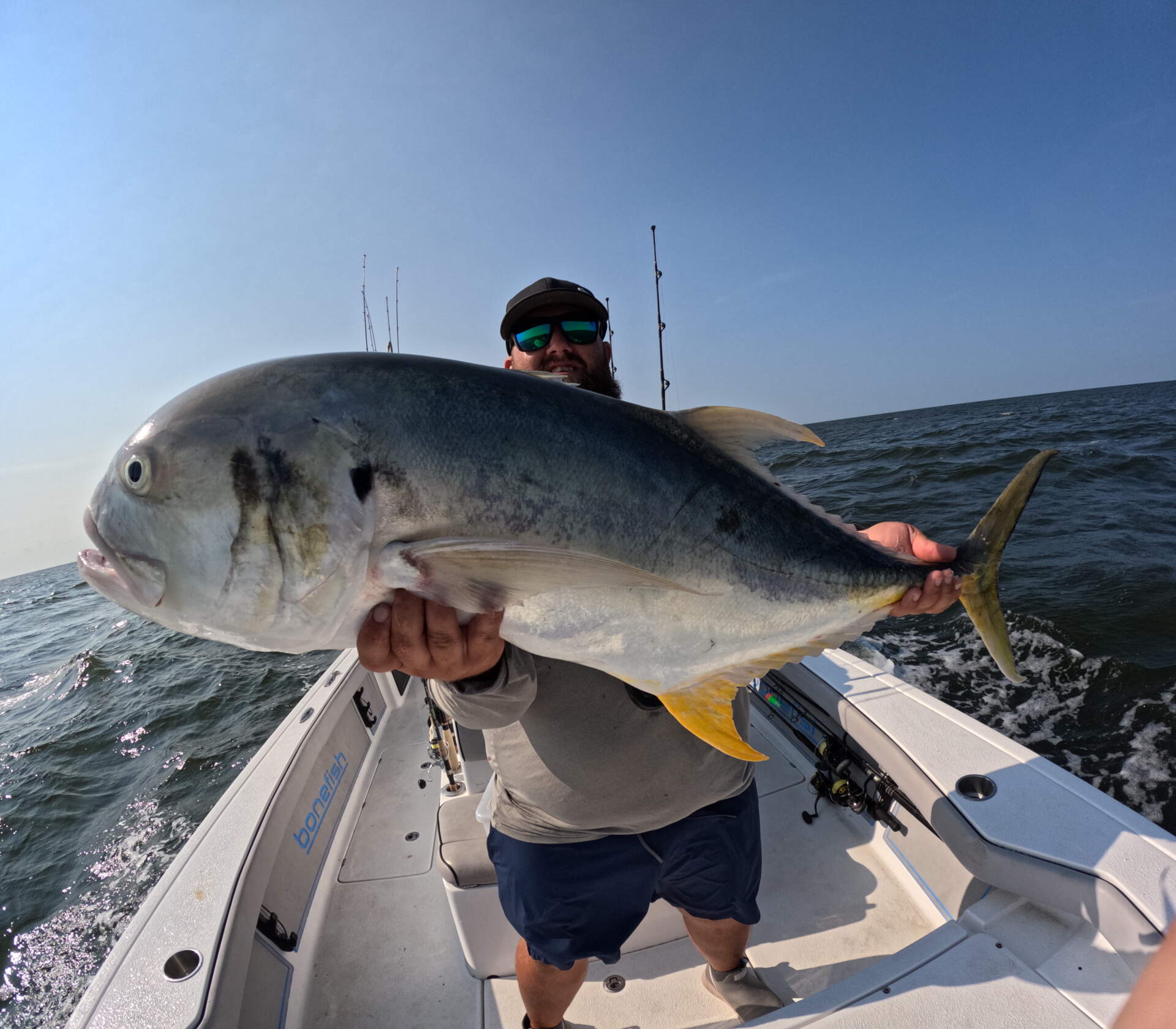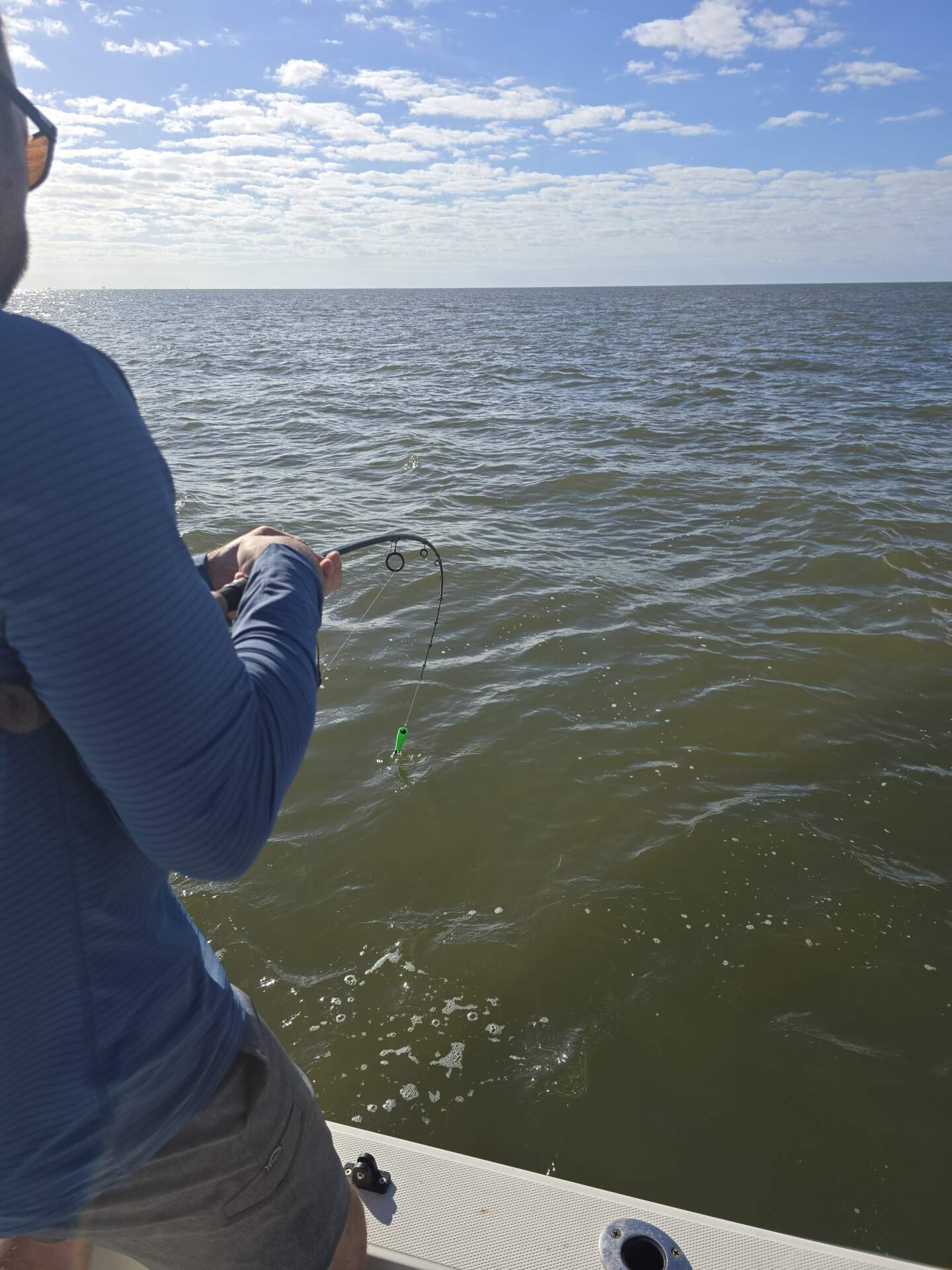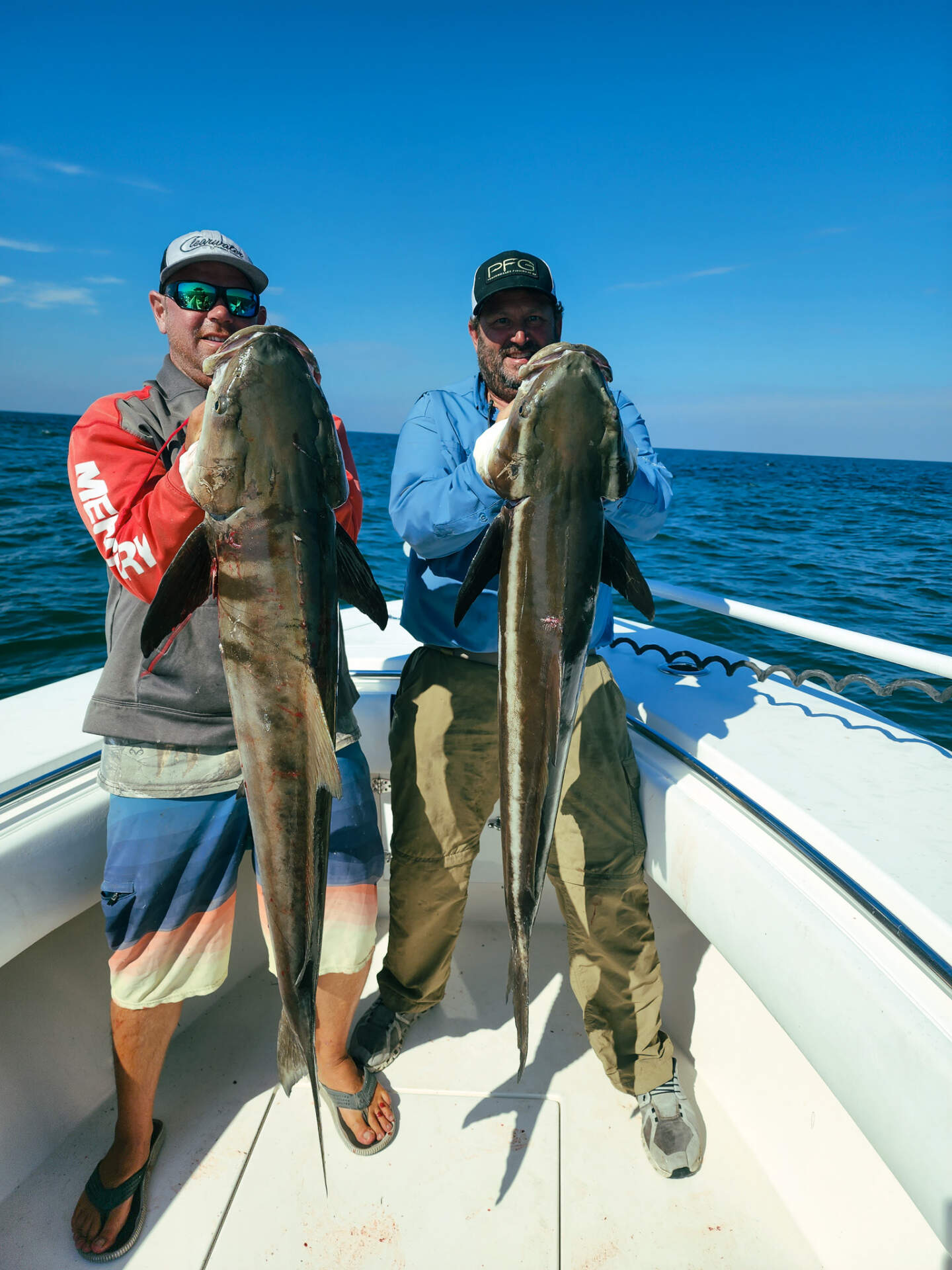The oil rigs in the Gulf of Mexico are some of the most productive fishing spots in Louisiana and beyond. These massive structures, stretching from the shallows to deep offshore waters, are more than just industrial behemoths—they’re thriving ecosystems, acting as artificial reefs that attract some of the most prized fish in the Gulf. If you’re looking for serious action, hard fights, and fish that will test your gear and your endurance, rig fishing is where it’s at.
Why Rigs Hold So Many Fish
The presence of an oil rig changes the surrounding marine environment in a big way. The structure itself provides cover, making it an ideal home for baitfish, crustaceans, and smaller reef fish. The currents around these platforms push nutrients and food sources toward them, creating a steady buffet for everything from red snapper and grouper to wahoo and yellowfin tuna.
Rigs located in deep water—especially those near the edge of the Continental Shelf—are magnets for pelagic species like tuna, billfish, and mahi-mahi. These fish follow schools of baitfish that congregate around the rigs, turning them into feeding zones. Meanwhile, the lower portions of the rig and the surrounding seabed attract amberjack, grouper, and other deep-dwelling species.

The Fish You’ll Find Around Oil Rigs
If you’re fishing near an oil rig, you need to be prepared for a wide variety of species. Some are structure-oriented and will stay close to the rig, while others roam the surrounding open water. Here’s a breakdown of what you can expect to catch.
Yellowfin Tuna
Few fish draw more attention from offshore fishermen than yellowfin tuna. These powerful, fast-moving predators frequent deepwater rigs, especially at night when they move closer to the surface to feed.
Best Techniques:
- Live Baiting – Hardtails, pogies, and blue runners work best.
- Chunking – Cutting up bonito or blackfin tuna and throwing chunks in the water attracts yellowfin.
- Trolling – Rigged ballyhoo and artificial lures like cedar plugs are solid options.
Once hooked, yellowfin will take off on blistering runs, peeling drag and testing your endurance. Heavy gear is a must, and fights can last well over an hour with the bigger fish.
Amberjack (Reef Donkeys)
Amberjack are known for their brute strength, often hitting like a freight train and immediately diving toward structure. These fish are a staple of rig fishing, especially in deeper water.
Best Techniques:
- Vertical Jigging – Heavy metal jigs worked aggressively up the water column will trigger strikes.
- Live Baiting – Blue runners, pinfish, and mullet work well.
- Drop Baits – Large cut baits fished near the bottom are also effective.
If you’re targeting amberjack, be ready for a long, hard fight. These fish don’t give up easily and will use every ounce of their power to pull you into the rig’s structure.

Red Snapper
During the open season, rigs are some of the best places to find red snapper. These fish stack up around the platforms in huge numbers, often suspended in the mid-water column.
Best Techniques:
- Live Baiting – Shrimp, squid, and small baitfish work well.
- Bottom Fishing – Dropping cut bait straight down will get quick bites.
- Chumming – Tossing bits of bait into the water can bring snapper up from the depths.
Bigger snapper tend to hold deeper, so fishing near the base of the rig can lead to larger catches.
Grouper
Grouper species like gag, red, and scamp grouper lurk near the bottom, using the rig’s structure as cover. When they hit, they make a beeline for the nearest crevice, so you need to be quick with your hook set.
Best Techniques:
- Live Baiting – Mullet, pinfish, and cigar minnows are top choices.
- Heavy Jigging – Large jigs bounced off the bottom can entice bites.
- Cut Bait Drops – Big chunks of bonito or squid work well for enticing groupers to bite.
Wahoo
These high-speed predators are known for their aggressive strikes and lightning-fast runs. They’re commonly found around rigs, especially in deeper waters.
Best Techniques:
- High-Speed Trolling – Pulling deep-diving plugs or rigged ballyhoo at 12-18 knots is a proven method.
- Casting Plugs – If wahoo are busting bait near the surface, casting large diving lures can lead to explosive strikes.
Mahi-Mahi
If there’s floating debris near the rig, there’s a good chance mahi-mahi are nearby. These colorful fish are aggressive and willing to hit just about anything.
Best Techniques:
- Live Baiting – Small baitfish or shrimp work well.
- Chumming – Throwing cut bait into the water can keep them interested.
- Trolling – Pulling small ballyhoo or flashy lures near the surface will attract bites.
Tactics for Rig Fishing
Fishing around oil rigs isn’t just about dropping a line—it takes the right techniques to deal with deep water, strong currents, and fish that know how to use structure to their advantage. The most effective methods depend on the species you’re targeting, but these core approaches cover just about everything.
Live Baiting
Live bait is one of the most productive ways to fish a rig. Hardtails (blue runners), pogies, pinfish, and cigar minnows are top choices, especially for tuna, amberjack, and snapper. Free-lining live bait near the surface works well for tuna, while weighted rigs keep it in the strike zone for snapper and grouper holding deeper.
Vertical Jigging
Heavy metal jigs dropped straight down and worked aggressively up the water column will trigger reaction strikes, particularly from amberjack, grouper, and even tuna. The key is a steady, rhythmic motion that mimics a fleeing baitfish.
Trolling
For pelagic fish like wahoo and tuna, trolling around the outskirts of a rig is a proven tactic. Deep-diving plugs and rigged ballyhoo work best at speeds between 6-12 knots, while high-speed lures can be trolled even faster to target wahoo specifically.
Chunking
When tuna are holding deep, chunking is a reliable way to bring them up. Cutting fresh bonito or blackfin into chunks and steadily tossing them in the water creates a feeding frenzy. Dropping a baited hook among the chunks often leads to instant hookups.

The Right Gear for Rig Fishing
Rig fishing puts serious strain on gear, and if you’re not set up properly, you’re going to lose fish. The combination of deep water, strong currents, and hard-fighting species means you need rods and reels that can handle serious pressure.
Rods and Reels
- For bottom fishing and heavy live baiting, a two-speed conventional reel with at least a 30-50 lb class rating is best for deep dropping or battling big amberjack and grouper. Pair it with a 6’6” to 7’ heavy-action rod rated for 80-130 lb line to handle the power of fish that will try to pull you straight into the structure.
- For jigging and lighter live baiting, a spinning reel capable of holding 400+ yards of 65-80 lb braid with a smooth but strong drag system works well when targeting tuna, snapper, or mahi-mahi. Match it with a 7’ to 8’ fast-action rod rated for at least 50-100 lb line to give you the lifting power needed to fight fish near structure.
- For trolling, a 50-80 lb class trolling setup with a stiff, short rod (5’6” to 6’) is ideal for high-speed trolling for wahoo or pulling bigger baits for tuna and billfish.
Line and Leader
- Braided mainline: 65-100 lb provides the strength needed to fight big fish while keeping enough sensitivity to feel deep strikes.
- Monofilament for trolling: 80-130 lb is preferred for trolling setups, providing shock absorption when a fast-moving fish like a wahoo or tuna hits.
- Fluorocarbon leader: 40-100 lb is essential when targeting tuna and snapper, as they can be leader-shy.
- Wire leader: 100-300 lb is necessary for toothy fish like wahoo and barracuda to prevent bite-offs.
Hooks and Terminal Tackle
- Circle hooks: Required for snapper and grouper, with 5/0 to 9/0 sizes being most common.
- Heavy-duty J-hooks: Used for trolling and targeting bigger fish, ranging from 7/0 to 12/0 depending on the bait size.
- Swivels and snap connections: 300-500 lb rated hardware helps prevent line twist and failures when fighting big fish.
- Weights and rigs: Depending on depth and current, 4-16 oz egg sinkers or bottom fishing rigs with 8-24 oz of weight keep baits in the strike zone.
Fishing the Rigs With a Charter
Fishing the oil rigs in the Gulf of Mexico is an experience that challenges even the most seasoned fishermen. The variety of fish, the sheer size of what’s out there, and the fights these fish put up make rig fishing one of the most rewarding ways to spend a day on the water. But getting out to the rigs and fishing them effectively requires more than just a boat and some bait. These trips take experience, the right gear, and knowledge of how to position, anchor, or drift around the structures to put you on the best bite.
That’s where a charter makes all the difference. A professional crew that knows the rigs inside and out can get you where the fish are fast, set you up with the right tackle, and give you the best chance at landing trophy fish. Whether you’re chasing yellowfin tuna in deep water, jigging for amberjack, or bottom fishing for snapper and grouper, having a crew that understands how to fish these waters makes all the difference.
At FishnLA, we specialize in oil rig fishing charters that put you on big fish with none of the guesswork. Our boats are rigged with top-tier gear, and our captains have spent years fishing these waters, knowing exactly where to go and how to get the job done. If you’re ready to experience the best rig fishing Louisiana has to offer, book your trip with us today.

